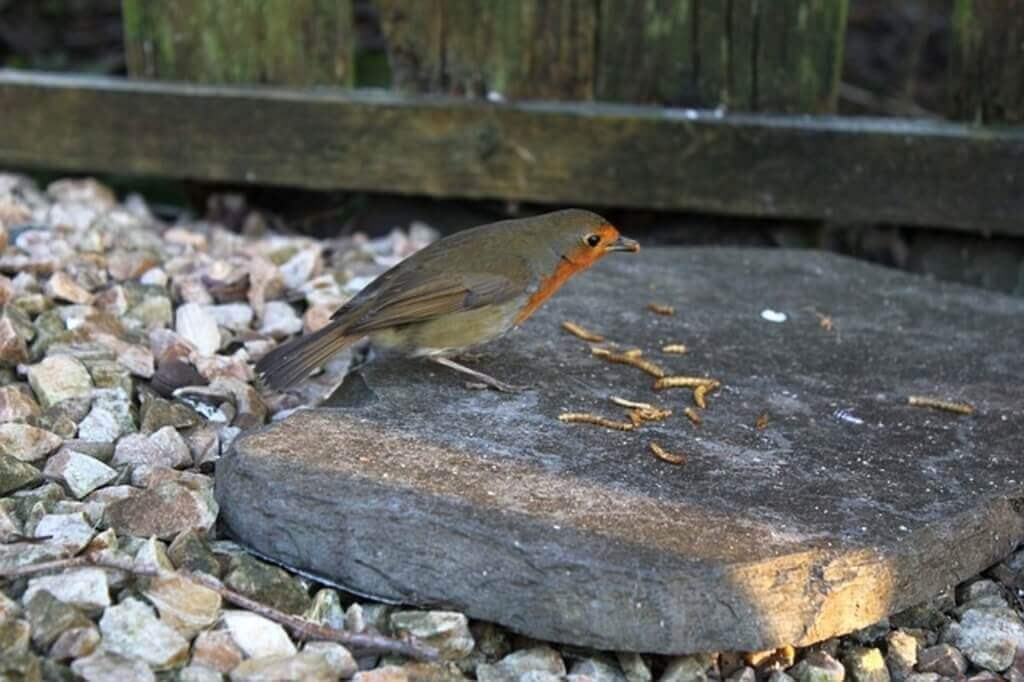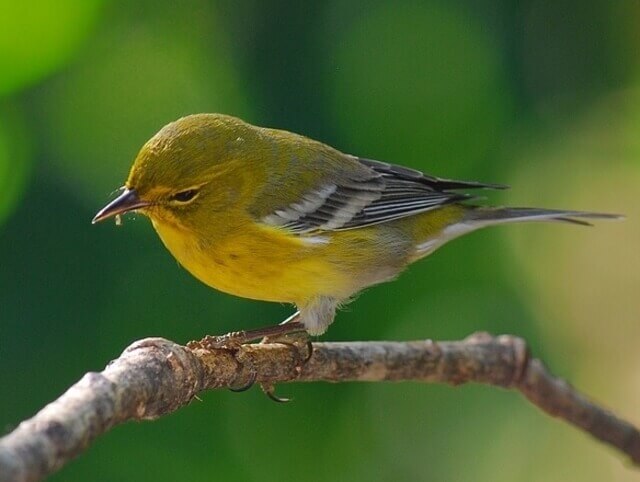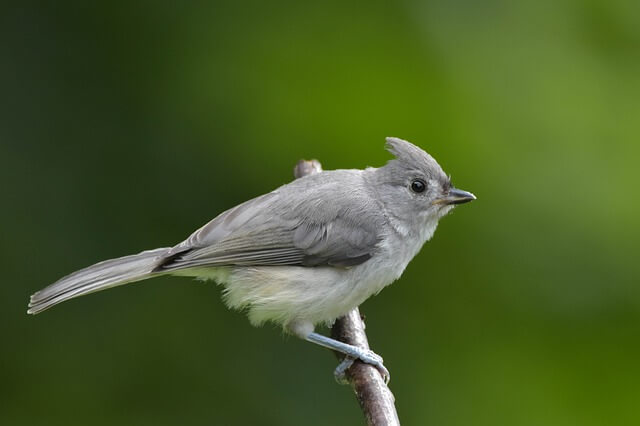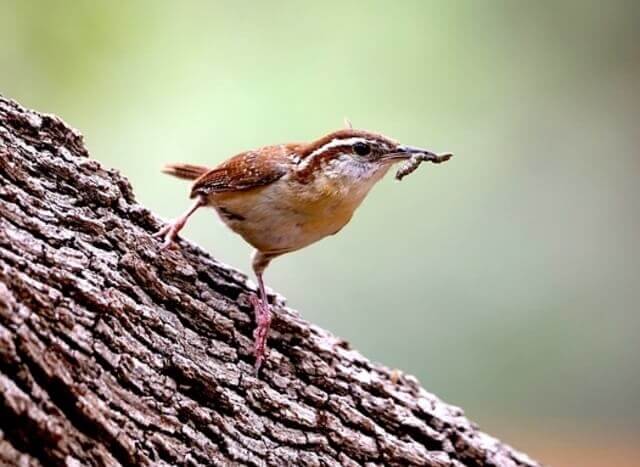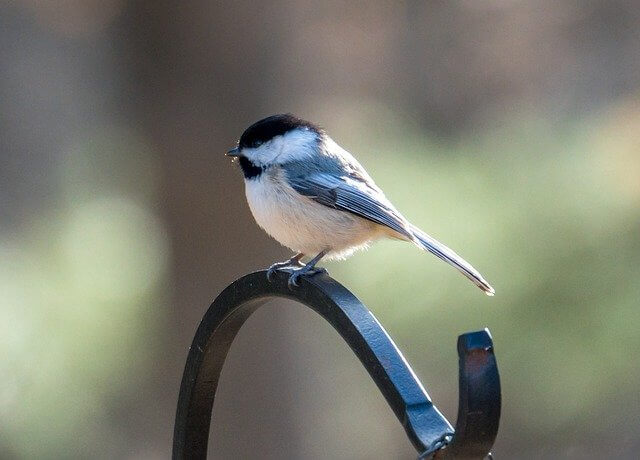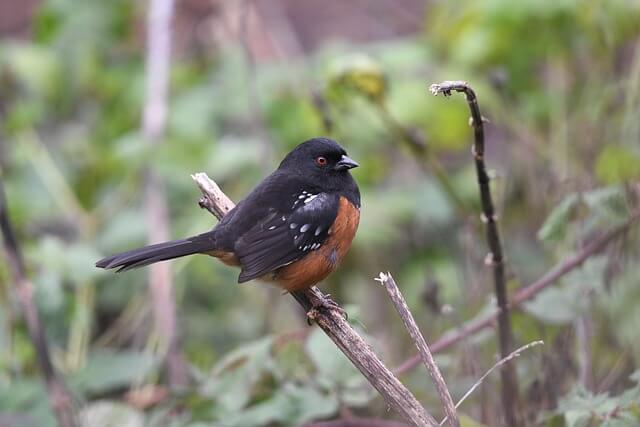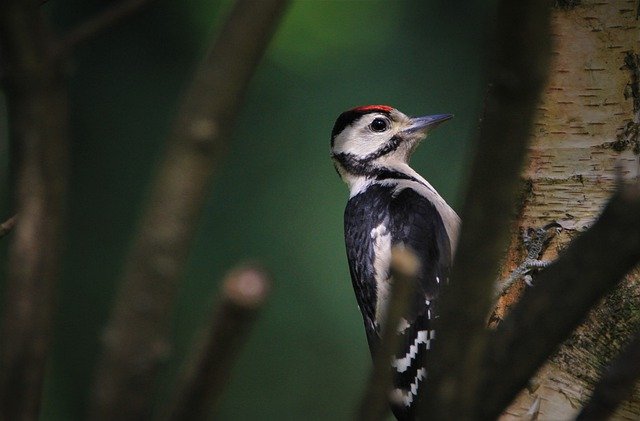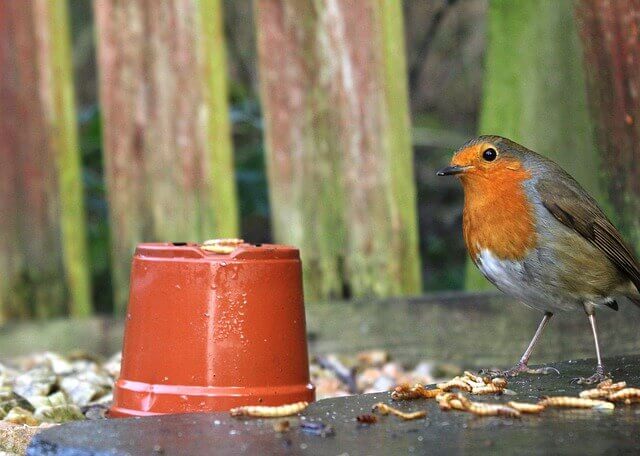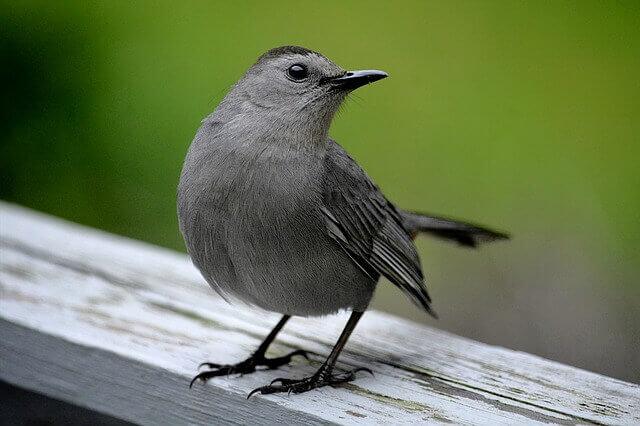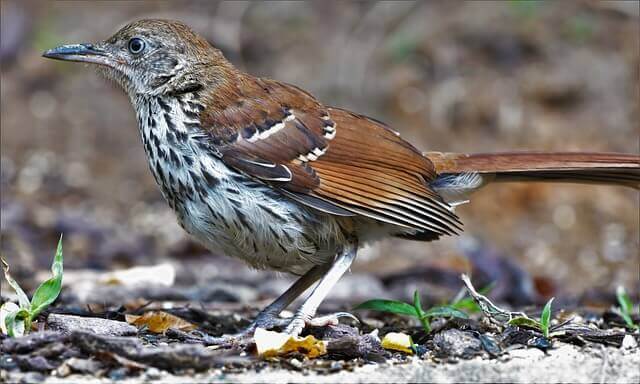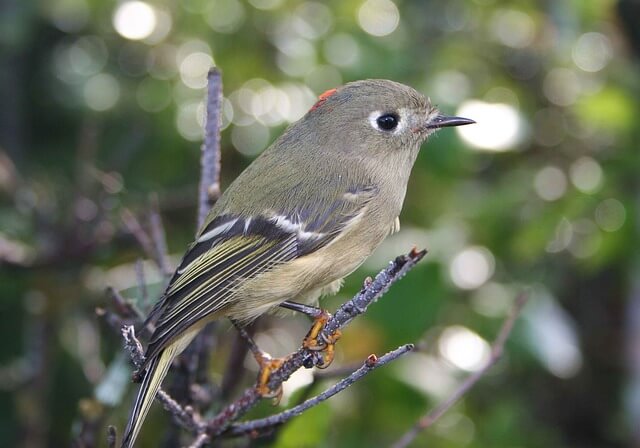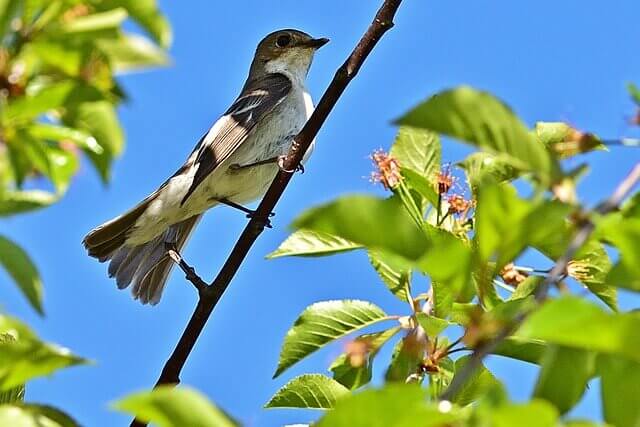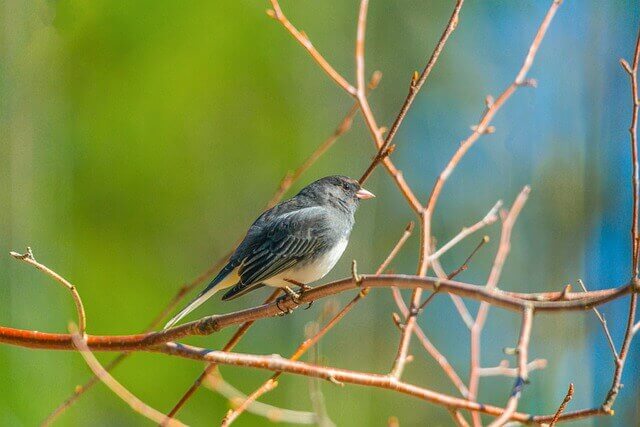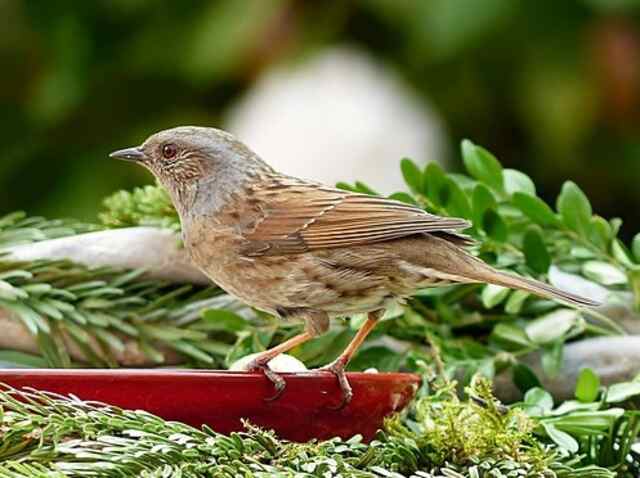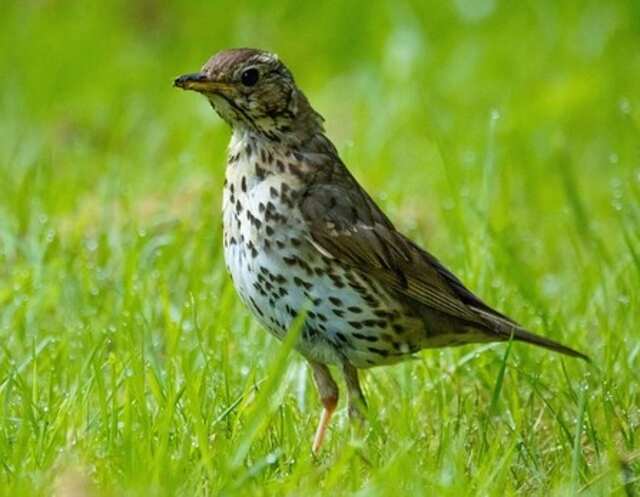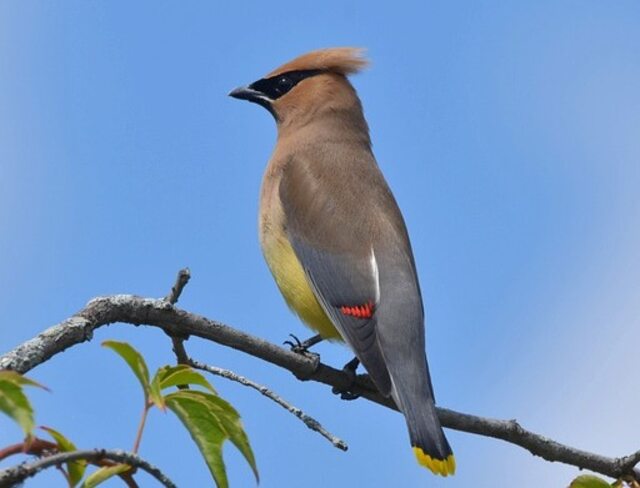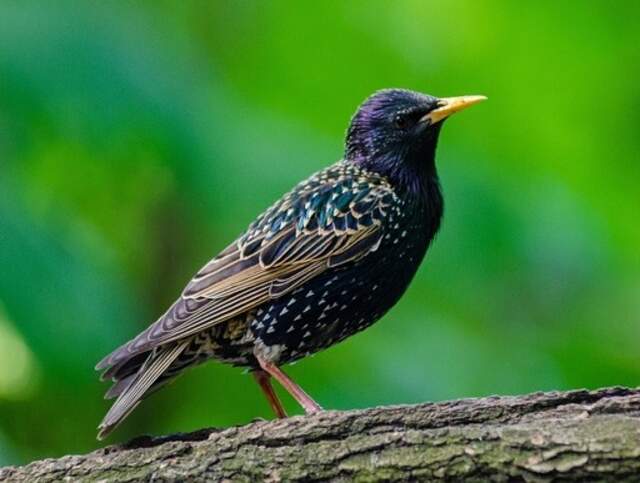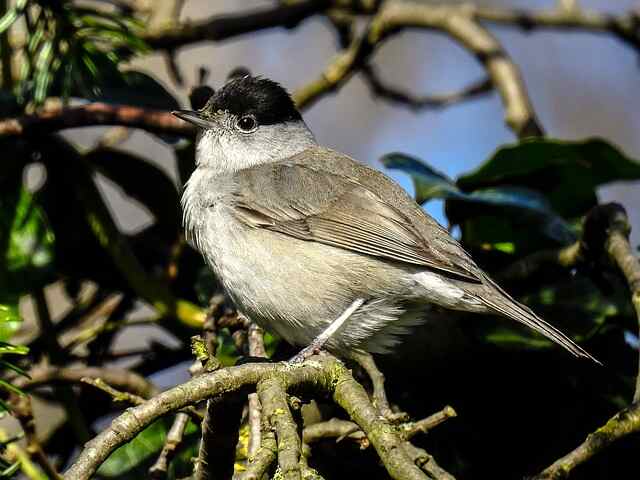Attracting a variety of birds to your backyard can be a rewarding experience, especially when you provide the right food. Mealworms are a favorite treat for many birds, offering a protein-packed snack that keeps them coming back for more.
In this guide, we’ll introduce you to Backyard Birds That Eat Mealworms, helping you to create a vibrant and diverse bird-friendly environment. Discover which species will flock to your feeders and enjoy the beauty of birdwatching right at home!
Table of Contents
- 1 Backyard Birds That Eat Mealworms
- 1.1 Warblers
- 1.2 Titmice
- 1.3 Wrens
- 1.4 Bluebirds
- 1.5 Chickadees
- 1.6 Towhees
- 1.7 Woodpeckers
- 1.8 Robins
- 1.9 Catbirds
- 1.10 Nuthatches
- 1.11 Thrasher
- 1.12 Kinglets
- 1.13 Grosbeaks
- 1.14 Buntings
- 1.15 Flycatchers
- 1.16 Mockingbirds
- 1.17 Orioles
- 1.18 Tanagers
- 1.19 Dunnocks
- 1.20 Thrushes
- 1.21 Waxwings
- 1.22 Jays
- 1.23 Starlings
- 1.24 Blackcaps
- 2 Frequently Asked Questions
- 2.1 Is it OK to feed birds dried mealworms?
- 2.2 Do birds prefer live or dried mealworms?
- 2.3 Can dried mealworms come back to life?
- 2.4 Should you soak mealworms for birds?
- 2.5 Are mealworms expensive?
- 2.6 Can dried mealworms turn into beetles?
- 2.7 Can birds eat too many mealworms?
- 2.8 Do blue jays like mealworms?
- 2.9 Do all birds eat meal worms?
- 2.10 Do dried mealworms go bad?
- 2.11 How long do meal worms live?
- 2.12 What do mealworms turn into?
- 2.13 Do mealworms bite?
- 2.14 Can birds smell mealworms?
- 2.15 Why are my mealworms dying?
- 3 Author
Backyard Birds That Eat Mealworms
Warblers
The Pine Warbler is a small bird that can be found in many parts of the world. These birds typically live in deciduous forests and eat mostly insects, such as caterpillars and spiders. However, there are other types of food that they like to eat too.
Pine Warblers also eat mealworms regularly because these worms contain nutrients and protein that help keep their bodies healthy and strong. Mealworms are low in fat but high in protein, which helps with their energy levels.
Related: How to Attract Warblers to your yard
Titmice
Tufted Titmice are small songbirds that live in North America. They can be found throughout the continent, except for parts of the Rocky Mountains and Great Basin. These birds eat mostly insects such as beetles, caterpillars, and spiders.
However, these little creatures also enjoy a nice mealworm now and then, which is why they often find them near bird feeders. They will even search through grasses for them when looking for food because they’re attracted to the movement that worms make.
Related: How to Attract Tufted Titmouse to your yard?
Wrens
The Carolina Wren is a small songbird native to the eastern United States. They have been introduced in western states and Canada. Carolina Wrens are typically found east of the Rocky Mountains in America, and range north into Canada and south into Mexico.
This bird species typically eats insects such as caterpillars, spiders, crickets, flies and other invertebrates, but they also enjoy eating mealworms from time to time.
Related: How to Attract Wrens to your backyard?
Bluebirds
The Eastern Bluebird is a type of bird that is common in North America. Eastern bluebirds are found from southeastern Canada to Florida, as well as north into southern parts of Quebec and Maine.
Eastern Bluebirds mainly eat insects, spiders, snails and other invertebrates found on the ground or vegetation around them. However, they also feed on seeds and berries, as well as other items such as fruits and sap from trees. The Eastern Bluebird will eat mealworms but not as often as other birds.
Related:
- How to attract Eastern Bluebirds to your yard
- Interesting Eastern Bluebird Facts
- 10 Best Birdhouses for Bluebirds
Chickadees
The Black-Capped Chickadee is a small black and white bird with a black cap on its head. This bird has one of the widest ranges of any other chickadees, and it can be found all over Canada and the United States except for Florida, California, Nevada, Arizona, Texas, Louisiana and Hawaii.
In the winter they migrate to central and southern regions where they can find a more favorable climate. Chickadees have been observed eating live mealworms, which some people might think is unusual behavior for a bird. However, these small songbirds prefer live prey to seeds because it’s more nutritious and will provide them with better energy to fly around during their migration period.
Related:
Towhees
The towhee is a species of bird that ranges from the eastern United States to Alaska. They are primarily found in woodland and brushy areas, but also inhabit some other habitats such as suburbs and even parks. Mealworms are a favorite food for many birds, and this includes towhees.
The Eastern Towhee, Spotted Towhee, Abert’s Towhee, and Rufous-sided Towhee all enjoy eating mealworms as well as grasshoppers, spiders, beetles, ants, snails and crickets. These birds will eat about any kind of live prey they can find, including crickets, flies, ants, and beetles.
Related: How to Attract Towhee to your Backyard
Woodpeckers
Woodpeckers are small cavity nesters, the females are bigger than the males. They like to live in the woods and deciduous evergreen shrubs like maples, elms, oaks, redwoods and sycamore trees. However, they are very happy birds and make wonderful show birds in your backyard if you have the space.
If you’re looking for a way to attract woodpeckers to your yard, one of the best ways is by feeding them mealworms. Woodpeckers are known for eating tree bark and bugs that live in trees, but they also enjoy eating insects like mealworms because it’s their preferred food source. They can be purchased at most pet stores or feed stores and come either in a bag or an enclosed container.
Related:
- How to Attract Downy Woodpeckers to your yard?
- How to Attract Pileated Woodpeckers to your yard?
- How to Attract Red-bellied Woodpeckers to your yard?
Robins
Feeding Robins is a tricky subject for most bird owners. There are several things to consider when you’re trying to decide what food source will work best for your feathered friend. Some feeders offer mealworms and crickets, but which one should you choose? The answer is both! Mealworms have more protein than crickets, so if you can’t find any of the worms in the wild then it’s worth investing in some from the store.
In recent years, it has been observed that robins are switching from eating crickets to mealworms. Robins usually eat a diet of bugs and worms, but now they’re starting to turn away from the traditional cricket in favor of the more nutritious mealworm.
Related: How to Attract Robins to your yard?
Catbirds
The Gray Catbird is among the most beautiful song birds in the world. These small, delicate songbirds are also very difficult to study and identify because they are shy and their numbers have been dwindling for decades. Although Gray Catbirds only live in a few regions of North America, these states include Maine, Vermont, New York, Pennsylvania, West Virginia and Ohio.
You can find them living at altitudes between 700-2000 meters above sea level; mostly near trees or shrubs with dense. The catbirds are typically all gray with a small black cap, blackish tail, and a rich rufous-brown patch under the tail. They feed on mealworms, seeds, nectar, and insects.
Nuthatches
The nuthatches are a small, subfamily, of the woodpecker genus Passiflora, of eastern North America. They live in forests, and mixed woodlands across much of Eastern Canada and the United States east of the Great Plains. The nuthatches, considered by many ornithologists to be the most beautiful of all birds, are also one of the most widely distributed of all North American species.
These birds love food, and will often travel far distances for their next meal. Nuthatches eat mealworms in order to store up fat reserves that will last them through periods when food is scarce.
Related: How to Attract Nuthatches to your yard?
Thrasher
Among the most common birds found around the United States is the Thrasher. This medium-sized bird is commonly found in parks, backyards, near ponds, water sources, and even abandoned mines. The Thrasher’s diet consists of insects and small mammals. If these are not available, then they will eat seeds or other plants.
The two types of food that this bird likes to eat most are grasshoppers and mealworms which they usually find while foraging. Some members of its genus, have a bright bill and a thick beak with a sharp hook on each end.
Kinglets
Kinglets are small birds that inhabit North America. They’re one of the smallest members of their genus, and like most members of their genus, they’re scavengers. Kinglets, will eat a variety of foods, including plant matter, seeds, insects, worms, millipedes, aphids, as well as small vertebrates.
When it comes to eating mealworms, Kinglets will eat them in great numbers, as they are one of the best foods for them. If you want to feed your bird’s an abundant supply of mealworms, then go for the Kinglet. You’ll be glad you did!
Grosbeaks
Grosbeaks are small birds, often mistaken for finches or cardinals. They can be found in North America, Europe, Asia, and Greenland, but their habitat is limited to regions where the climate is cool or cold. Grosbeaks prefer to eat seeds from wild plants, berries and insects during the summer months when they can find them.
During winter, grosbeaks eat what’s available at bird feeders or on bird tables, including mealworms. These birds are highly territorial, so it’s important to keep an eye on them if you’re considering introducing one into your backyard.
Related: How to Attract Rose-breasted Grosbeaks to your yard?
Buntings
The Indigo Bunting, is a medium-sized bird that lives in forests and thick brush in the southern part of North America. They are very active during the spring and summer seasons, but only for a short time. Because of this short time activity, they are rarely seen by humans, making it difficult to learn much about them.
One of the most interesting facts about buntings is that they eat mealworms. It may be difficult to understand how a bird can eat mealworms, but it is a very healthy snack for the bird. The fact that the buntings are not picky about what they are eating is also a plus.
Related: How to Attract Indigo Bunting to your yard?
Flycatchers
The insect-eating birds, called flycatchers, are native to North America. Flycatchers are a very fun-loving bird to have around your backyard. Their beautiful colors and patterns are sure to captivate anyone who sees them. They eat insects such as the mealworm for protein and fat sources.
Mealworms can be found in different habitats such as gardens, compost piles, and yards. Flycatchers will often watch their prey from a branch or shrub before swooping down and capturing it with their feet and bill. They then swallow the worm whole or tear off chunks of it to feed themselves and their chicks later on.
Mockingbirds
The Northern Mockingbird can be found from southern Canada and the northern United States, south through Mexico into northern Brazil and Argentina. Year-round the Northern Mockingbird can be found throughout most of North America, with the western United States having the most Mockingbirds in the winter. During the summer months the bird returns to its more southern destination, generally across the southern states, although some Mockingbirds may make their way east for the winter.
Since the Northern Mockingbird primarily eats insects, you might expect that this small and cute bird would not have much interest in eating mealworms. This is simply not the case. In fact, the diet of the Northern Mockingbird includes large numbers of mealworms, which it feeds on throughout the year.
Related: How to Attract Northern Mockingbirds to your yard?
Orioles
Orioles are a type of bird that can be found in North America. These birds are typically known for their ability to sing. One of the most interesting facts about Orioles is that they occasionally eat mealworms. The reason why these animals do this is that they’re looking for protein and fat to provide them with energy during long flights.
Orioles typically prefer grubs and other insect larvae that dwell in rotting logs and decomposing plant matter; however, when these sources of food are scarce or hard to find, they will turn to other insects for sustenance. Mealworms make an easy snack for orioles.
Related:
Tanagers
Tanagers are a type of bird. They can be found in the United States, South America, and Africa. Tanagers are a type of bird that feed on insects and fruit. In their natural habitat, they eat primarily insect larvae, but also will consume flowers, nectar and berries. One of the favorite types of food for tanagers is mealworms.
Tanagers use these worms as a food source for their young. Mealworms can provide nutrients such as proteins, vitamins, minerals and fatty acids which help to develop healthy feathers and give them enough energy to grow into adults in just weeks.
Related:
Dunnocks
Dunnocks are small brown birds that are found in Europe and Asia. They have a wide range, and can be found in forests and scrublands, but can also be found in gardens and urban areas. These birds are not shy birds, and will often approach humans for food.
Dunnocks feed on a variety of foods, consisting mostly of insects, but will also eat berries, and seeds. They will also readily eat mealworms if they are available. Mealworms are an important part of the dunnock’s diet, as they provide them with the protein and fat that they need to survive.
Thrushes
The song thrush is a bird that is found in Europe, Asia and North Africa. It has a brown back and wings, with a pale breast and belly. The song thrush is a shy bird, but its song is one of the most beautiful sounds in nature.
Their preferred habitat is in woods and gardens, where there are plenty of trees and bushes for it to hide in. It eats insects, earthworms and snails, but will also eat berries and fruits in the winter. The song thrush is not usually seen at bird feeders, but it will eat mealworms if they are available.
Related: How to Attract Thrushes to your Garden? (Expert Tips!)
Waxwings
Waxwings are a type of bird that can be found in North America and Eurasia. They get their name from the waxy red tips on their wings, which are used to attract mates. Waxwings are known for their love of fruit, and they will often eat berries until they make themselves sick.
In addition to fruit, waxwings also eat insects, especially when they are feeding their young. Mealworms are a favorite food of waxwings, and they will often come to bird feeders to eat them.
Related: How to Attract Cedar Waxwings to your Yard (Experts Tips)
Jays
Jays are found in North America, Europe, and Asia. They range in size from 9 to 12 inches long and have a wingspan of 21 to 24 inches. Jays are very adaptable birds and can live in a variety of habitats including forests, woodlands, farmlands, and urban areas.
Jays are omnivorous birds and their diet consists of a variety of items including acorns, berries, insects, small mammals, and reptiles. Jays will also eat bird eggs and nestlings. Mealworms are an important part of the jay’s diet, and they will often store acorns with mealworms in them to eat later.
Related:
- What Attracts Blue Jays to your Yard?(Expert Tips)
- 15 Best Bird Feeders For Blue Jays (Tried & Tested 2022)
- What Does A Blue Jay Eat? (10 Favorite Foods Revealed!)
Starlings
Starlings are small to medium-sized passerine birds. The nominate subspecies of the common starling, Sturnus vulgaris, is about 20 cm long and has glossy black feathers with a metallic sheen, which give the bird a very striking appearance. The bill is black in winter and yellow in summer, and the legs are reddish-orange. The common starling is found in Europe, Asia and Africa.
It has also been introduced to Australia and New Zealand. The diet of the common starling consists mainly of insects, but it will also eat fruit and berries. Starlings will often eat mealworms. They are a good source of protein for birds.
Related: How To Attract European Starlings To Your Yard Fast?
Blackcaps
Blackcaps are a species of true warbler. The adult male has black head, throat and upper breast, with the rest of its plumage being gray-brown. The adult female is similar, but with a brownish tinge to her plumage. Both sexes have dark brown eyes and a short tail, which is often held cocked. Blackcaps are found in woodland and scrub habitats across much of Europe and Western Asia.
They are migratory birds, spending the winter in Southern Europe, North Africa or the Middle East. Blackcaps eat a diet of insects, spiders and other small invertebrates. Mealworms are also known to be eaten by them, although they form a relatively small part of their diet.
Frequently Asked Questions
Is it OK to feed birds dried mealworms?
Dried mealworms are a great option for feeding wild birds. They are an excellent source of protein and fats for hungry birds that can’t find natural food sources in the winter, while also providing enjoyment from interacting with people!
Do birds prefer live or dried mealworms?
Birds like the squirming and moving of a live mealworm because it triggers their hunting instincts. They also like the feel of the wriggling movement in their beaks or claws. The last reason is that they can taste better because when food moves around it activates more sensory receptors on their tongues than if it were dead and motionless
Can dried mealworms come back to life?
Unfortunately for the dried mealworms, no they cannot come back to life. They often go through a process called ‘drying out’ which means their water content is lowered until they become hard and dry. Dried mealworms have died, so there’s no way of bringing them back to life.
Should you soak mealworms for birds?
Birds will eat them, either dried or soaked. I find the best way to do this is by soaking mealworms in water for about a half hour. The worms will swell up and be easier for the birds to eat. There are many methods that you can use, but one of the most popular ways is by putting them in a jar with some water.
Are mealworms expensive?
Mealworms are not expensive, and are a cheap alternative to other feeders, and provide all the necessary nutrients for them to live on. Mealworms also have an earthy taste that attracts many types of birds such as cardinals, sparrows, and crows. The worms cost about $5-$10 per pound, which is cheaper than peanuts or sunflower seeds.
Can dried mealworms turn into beetles?
Dried mealworms cannot turn into beetles for two reasons: they are not alive, and there are no living cells left inside them to do so even if they were alive.
Can birds eat too many mealworms?
Yes, birds can eat too many mealworms. If a bird eats nothing but mealworms, it can actually die of liver or kidney toxicity. While mealworms are a great source of protein for birds, they should only make up a small part of the bird’s diet. A good rule of thumb is to offer no more than 10-20 mealworms per day to each bird.
Do blue jays like mealworms?
Mealworms are the larvae of darkling beetles. These grubs are a common food source for many animals, including blue jays. While some people might think that blue jays only eat insects, they actually have a very diverse diet. In addition to mealworms, blue jays also eat fruits, nuts, and other small animals.
Do all birds eat meal worms?
Not all birds will eat mealworms, only those that are insectivorous will typically hunt them down as a source of nutrition. Insectivorous birds have beaks and digestive systems that are adapted for eating insects. Their beaks tend to be sharp and pointed, which helps them to pierce through the hard exoskeletons of their prey. They also have shorter intestines than other types of birds, which helps to prevent indigestion from eating insects that may contain hard shells or exoskeletons.
Do dried mealworms go bad?
Dried mealworms have a long shelf life and can be stored for months or even years without going bad. So, do dried mealworms go bad? No, they don’t spoil or go bad. However, over time they will lose their nutritional value and become less palatable. For this reason, it’s best to use dried mealworms within a year of purchase.
How long do meal worms live?
Mealworms, the larvae of darkling beetles, can live for a long time if provided with the proper care. In the wild, mealworms generally only live for about two to three months. However, in captivity, they can live for up to 1 year. The key to keeping them alive for a long time is to ensure that they have a food source and that their environment is not too hot or too cold. Mealworms will die if they are not given enough food or if the temperature of their environment is outside their ideal range.
What do mealworms turn into?
Mealworms go through four stages of life: egg, larva, pupa, and adult. The larval stage is when the mealworm looks like a small worm. It is during this stage that the mealworm grows the most. It molts, or sheds its skin, several times during this stage. The last molt turns the larva into a pupa. The pupal stage is when the mealworm changes into an adult beetle. This process takes about two weeks. The adult beetle is dark brown and has wings. It can fly and mate to produce more eggs, which will start the cycle all over again.
Do mealworms bite?
Despite their small size, some people may be wondering if mealworms can bite. The answer is no, mealworms cannot bite. Their mouths are simply not designed for biting. Mealworms do have chewing mouthparts that they use to eat their way through food sources, but they cannot use these same mouthparts to bite humans or other animals.
Can birds smell mealworms?
No, birds cannot smell mealworms. The sense of smell is not well developed in birds and they lack the olfactory receptor genes that are necessary for smelling. However, they do have a keen sense of taste and can detect certain chemicals in their food.
Why are my mealworms dying?
If you’re noticing that your mealworms are dying, there could be a few reasons why. First, check to see if they have enough food. Mealworms need a diet of bran, oats, or other grain products. They also need vegetables like carrots, potatoes, or cabbage. If they don’t have enough of either of these things, they will start to die off. Another reason why mealworms might die is because of dehydration. Make sure that their habitat has enough moisture by misting it with water every day or so. Finally, mealworms can die from too much heat or cold. Their ideal temperature is between 70 and 80 degrees Fahrenheit. If it gets too hot or too cold where they are, they will perish.

